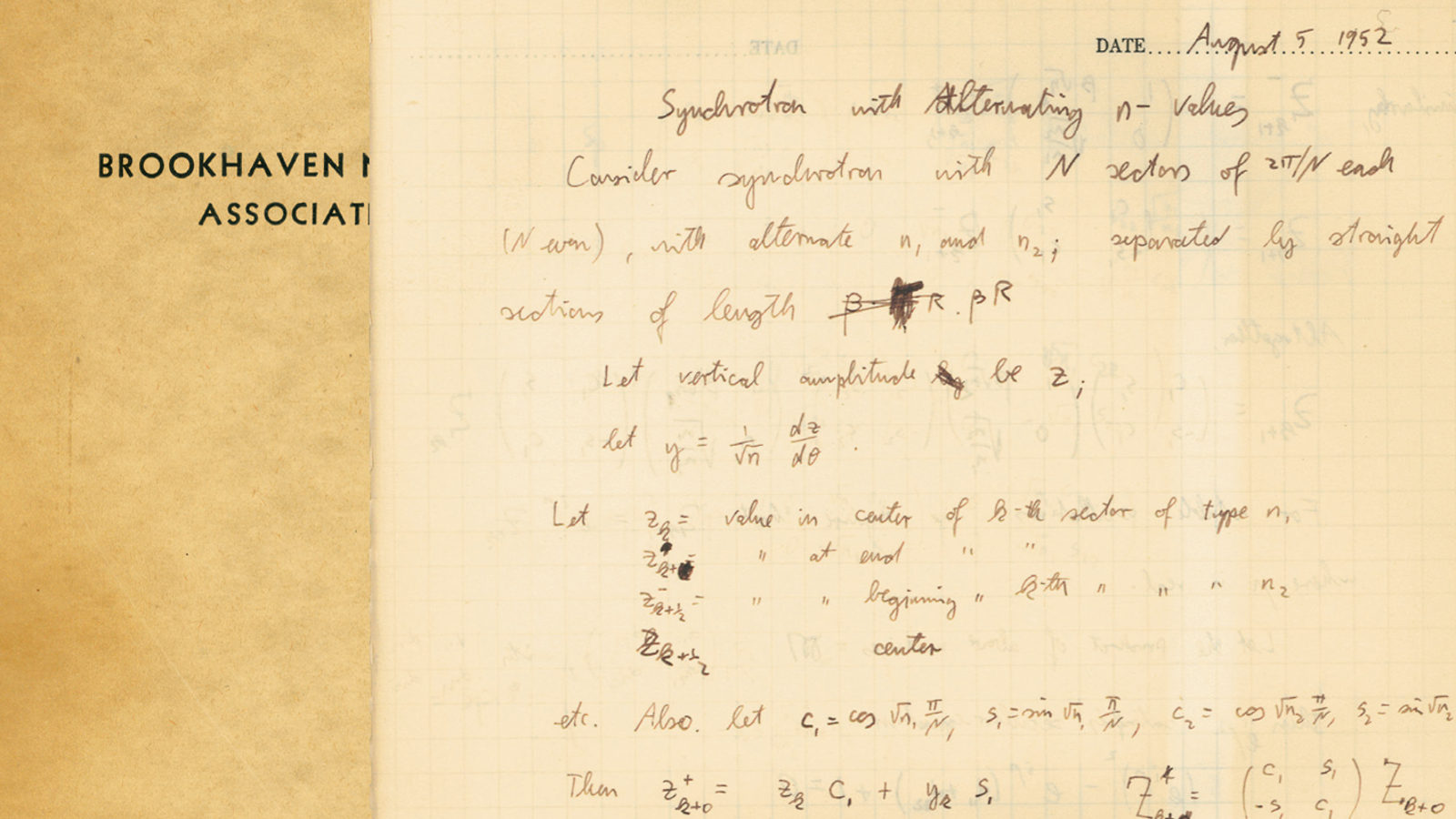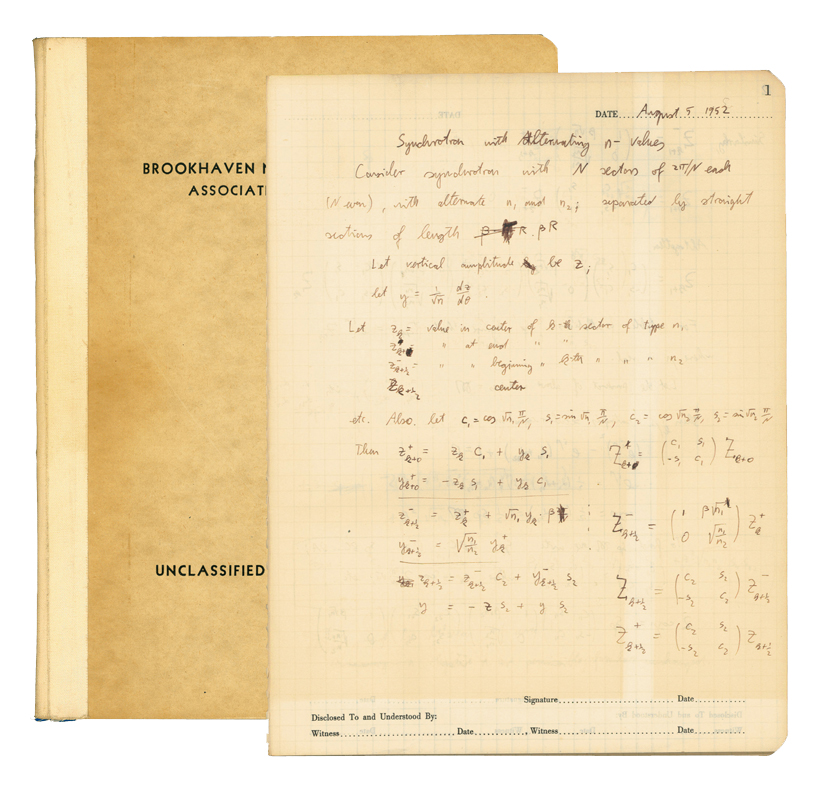Livingston requested some calculations from Courant: What would be the result of physically reversing some of the C-shaped magnets that guided particles around the Cosmotron’s circular track in tight beams? The open sides of all the magnets faced outward, allowing each magnet to weakly focus the particles in both the horizontal and vertical directions. But if an individual C’s magnetization rose too high, it would focus the beam in one direction while destabilizing it in the other. Would turning some of the magnets to face inward cancel this destabilization?
And so, on August 5, Courant titled the first page of a fresh notebook Synchrotron with Alternating n-values, and set to work. His calculations demonstrated that flipping some of the magnets would not only focus the beam more strongly, but also allow for more magnetic saturation, and thus, smaller magnets. Without this strong focusing effect, multiplying the Cosmotron’s power by 10 would have required 100 times more steel for magnets, making them prohibitively expensive.
The Brookhaven team later learned that Nicolas Christofilos, an electrical engineer, had conceived strong focusing in 1949, but his manuscript had not been published because of filing errors. When Christofilos heard about Brookhaven’s discovery, he came forward and the lab hired him as work began on a new strong-focusing accelerator, the Alternating Gradient Synchrotron.
Although the AGS design was the first to incorporate strong focusing, CERN’s Proton Synchrotron was the first operating accelerator to put Courant’s principle to use. Today, as Courant turns 90 and the AGS enters its 50th year of operations, it is strong focusing that puts the current generation of powerful accelerators, like Brookhaven’s Relativistic Heavy Ion Collider and CERN’s Large Hadron Collider, within practical reach.








